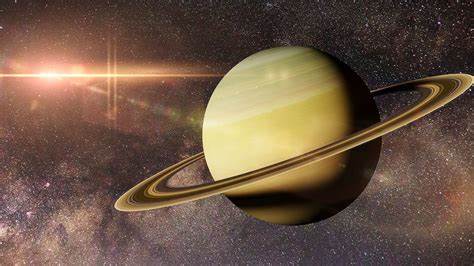
Human Knowledge of Saturn Throughout History: A Middle Eastern and Ancient Egyptian Perspective
Share
Saturn, the sixth planet from the Sun and one of the most intriguing celestial bodies in our solar system, has captured the attention of civilizations throughout history. With its striking ring system and enigmatic presence in the night sky, Saturn has been a subject of awe and fascination for ancient cultures, particularly in the Middle East and Ancient Egypt. These civilizations, with their sophisticated understanding of celestial phenomena, developed rich mythologies, astronomical knowledge, and spiritual interpretations that continue to influence modern thought.
Saturn in the Middle East: From Babylon to Sumer
In the ancient Middle East, the study of celestial bodies was deeply intertwined with religion, mythology, and astrology. The Babylonians, known for their advanced understanding of astronomy, were among the first to systematically track the movements of planets. Saturn, in particular, held a significant place in their celestial framework.
The Babylonians referred to Saturn as “Shamash,” a god associated with justice, order, and time. Shamash was seen as a symbol of cosmic balance, reflecting the planet’s slow and deliberate orbit, which contrasted with the more erratic movements of other planets. Babylonian astronomers meticulously recorded the positions of Saturn, integrating its cycles into their calendar systems and predicting its appearances with remarkable accuracy. This knowledge was deeply embedded within their religious rituals, where the planet’s movements were seen as a reflection of divine will and cosmic harmony.
Sumerian culture, which predates Babylon, also revered Saturn as one of the important celestial bodies. Tablets from ancient Sumer depict complex astronomical observations, showcasing a profound understanding of the planetary movements, including those of Saturn. These early civilizations used this knowledge to predict agricultural cycles, seasonal changes, and important cultural events.
Saturn in Ancient Egypt: Cosmic Symbolism and Spiritual Significance
In Ancient Egypt, Saturn held a unique place in the cosmological and spiritual landscape. The Egyptians perceived celestial bodies not merely as physical entities but as representations of divine forces and cosmic principles. Saturn, known as “Khonsu,” was associated with time, protection, and the mysteries of the afterlife.
Khonsu was primarily worshipped as a lunar god, often linked with the moon, but his significance extended beyond this realm. Saturn’s slower movement through the heavens made it symbolic of endurance and the passage of time—a theme central to Egyptian thought. The Egyptians believed that understanding the movements of Saturn was essential for maintaining balance in both earthly and spiritual realms.
Artifacts and temple inscriptions from Ancient Egypt reveal extensive observations of Saturn’s cycles. Priests meticulously tracked Saturn’s periodic appearances, incorporating this knowledge into their rituals and aligning them with sacred celestial events. The planet’s association with the afterlife and cosmic order further strengthened its role in religious and philosophical thought, reflecting a deep-seated belief in its divine influence over fate and destiny.
Saturn in Mythology and Astrology
Both in the Middle East and Ancient Egypt, Saturn was not just a physical object to be studied but a powerful symbol of cosmic order and transformation. In Babylonian mythology, Shamash guided the souls of the dead, emphasizing Saturn’s role in the cycle of life, death, and rebirth. Similarly, in Egyptian theology, Khonsu’s influence extended into the realm of the underworld, acting as a guardian for the dead and aiding the deceased’s journey through the afterlife.
Astrologically, Saturn came to be associated with structure, discipline, and limitation. In both Babylonian and Egyptian traditions, Saturn was seen as a planet that imposed necessary boundaries and tested human resilience. It was believed that those born under Saturn’s influence faced challenges and obstacles, which ultimately contributed to personal growth and enlightenment.
Legacy and Modern Understanding
The ancient knowledge of Saturn, deeply rooted in the traditions of the Middle East and Ancient Egypt, has influenced modern astronomical and astrological studies. While scientific exploration has advanced our understanding of Saturn’s physical properties, the symbolic and spiritual interpretations developed by ancient civilizations continue to enrich our comprehension of the cosmos.
The meticulous observations and interpretations of Saturn by ancient Middle Eastern and Egyptian scholars provide a foundation for understanding not only the physical mechanics of the planet but also its deep connection to the human experience. These early insights remind us that the cosmos holds not only scientific truths but also profound philosophical and spiritual wisdom that transcends the boundaries of time.
